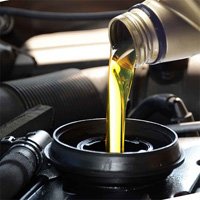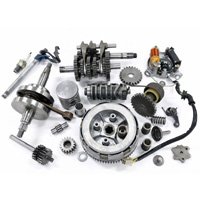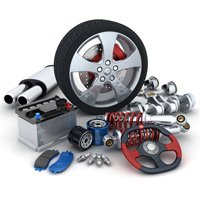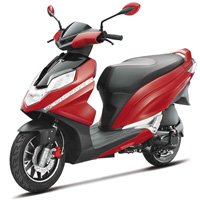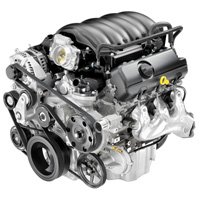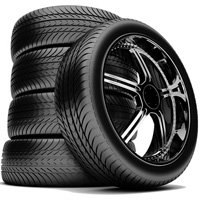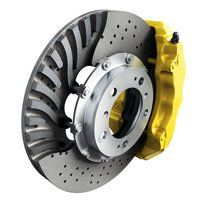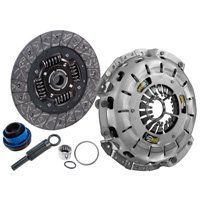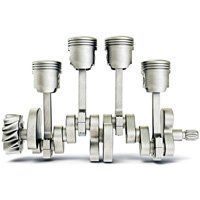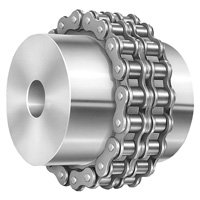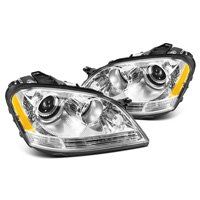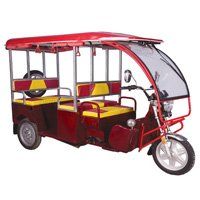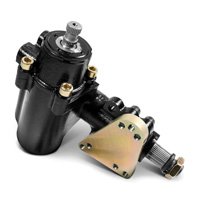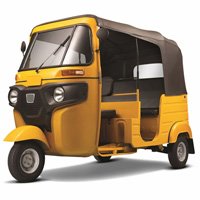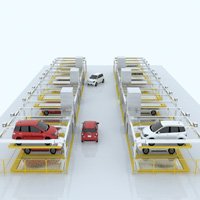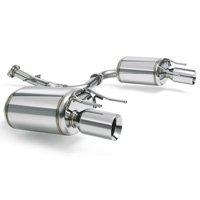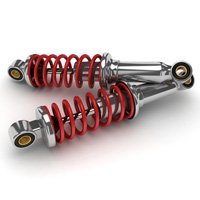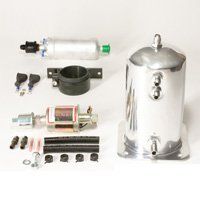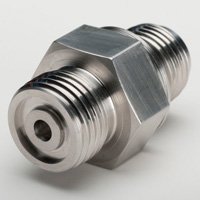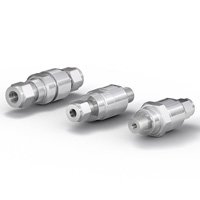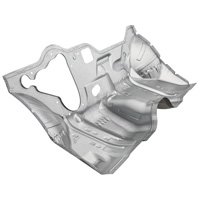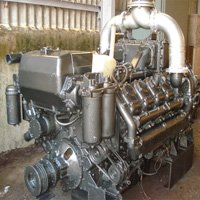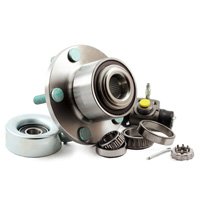Automobile
Recently Added Products
Automobile Industry in India
Introduction
The health of the Indian economy can be gauged by looking at the auto industry, which is crucial to the country's overall growth and development on both a macro and micro level and to technological progress. Since a large proportion of India's population is under the age of 25, and the middle class is expanding there, two-wheelers are the market's primary volume driver.
Companies' increasing curiosity in opportunities in rural areas has also contributed to the industry's expansion. Demand for commercial vehicles is increasing due to the growth of the logistics and passenger transportation sectors.
The electrification of vehicles, especially three-wheelers and small passenger autos, is seen as a key development that will drive market expansion in the future.
As the world's largest tractor producer, second-largest bus manufacturer, and third-largest heavy trucks manufacturer, India has a commanding presence in the global heavy vehicles market. In FY22, India produced 22.93 million autos annually.
Automobile : Major Parts and Components
1. Catalytic Converter
The catalytic converter is an integral part of this setup. Before exhaust fumes are released into the atmosphere via the tailpipe, the catalytic converter helps convert dangerous substances in emissions into harmless gases.
2. Shock Absorbers
The primary role of the shocks is to keep your tires in constant contact with the pavement. Because of this, you'll be able to operate the car with greater ease and security. They aid braking performance by ensuring that tires maintain constant contact with the road.
3. Transmission
When driving a car with a manual gearbox, the driver shifts gears manually using a gear lever or shifter, while an automatic transmission does so automatically. Both manual and automatic transmissions are complex machines.
4. Radiator
It stands to reason that there would be a cooling system in your vehicle, given the amount of heat generated by the engine when driving. The radiator plays a significant role in this setup.
5. Brakes
In addition to stopping the car, brakes can help keep it in place when it's parked. Disc or drum brakes are standard on most vehicles. Calipers, rotors, and brake pads are all components of a disc brake system. Brake drums and brake shoes make up a drum brake system.
6. Alternator
Electricity is produced by the alternator. It converts the kinetic energy created by the car's motion into electrical energy, allowing the battery to remain charged at all times.
7. Battery
The battery in your automobile is responsible for many functions, one of the most crucial being generating the necessary energy for the engine to turn over when you turn the key.
8. Engine
It's only logical to begin with the engine, the most vital component hidden from view under the hood. Internal combustion engines, found in the vast majority of contemporary automobiles, produce energy by igniting a mixture of air and fuel that drives pistons, which in turn propels the vehicle.
Future of Automobile Industry in India
It's no exaggeration to say that the automobile industry in India is a major force behind the country's recent economic boom. It accounts for 49% of the GDP in India's manufacturing sector and 7.50% of the country's total GDP. In addition, the industry is directly or indirectly responsible for employing 36 million people. This number is projected to reach 65 million by 2026.
1. Future of Electric Vehicles in India
As per Union Minister Nitin Gadkari, by 2030, almost 70% of commercial vehicles, 40% of buses, 30% of cars, and 80% of two-wheelers will be electric. The Government of India has launched a number of programs, such as the National Electric Mobility Mission Plan (NEMMP) and the Faster Adoption and Manufacturing of Hybrid and Electric vehicle (FAME), to achieve the 2030 target.
2. Automotive sector resilient in face of headwinds
Production of commercial automobiles in India has practically returned to levels seen before the outbreak. A younger, wealthier, and more aspirational consumer class in India bodes well for the country's automotive industry in the years and decades ahead. Think about the fact that today, people under the age of 30 make up roughly 65% of all new automobile purchases.
3. Shifting consumption patterns in India
Compared to the first nine months of 2021, demand for luxury automobiles has up significantly so far in 2022. Sales of luxury vehicles increased by 32% compared to the same period in 2021, on the back of pent-up demand and increased consumer disposable income. Again, it's the young who are driving the market for expensive cars.
Forecasts indicate an 8.6 percent compound annual growth rate for the personal car market in India through 2027. Customers today value convenience and security, thus SUVs are a popular choice. The industry has responded by making SUVs more desirable.
Even only 5 years ago, several features found in today's SUVs were unthinkable at their respective price ranges.
4. Fuel alternatives
The introduction of electric vehicles and other alternative fuel sources in India's automotive sector has had far-reaching effects on the country's economy and environment.
In terms of crude oil imports, India is ranked #4 globally. Around 80% of its crude oil needs and 40% of its natural gas needs are met by imports. India has to convert to alternate energy sources so it can stop spending billions of dollars annually importing oil and natural gas in order to meet its soaring energy demands. India has been exploring nonconventional energy options due to rising pollution concerns and erratic costs for gasoline and diesel.
5. Foreign Investment
Several automakers have begun investing extensively in various sectors of the business in recent months in an effort to meet the rising demand. The Department of Industrial Policy and Promotion (DIPP) reports that between April 2000 and June 2017, the manufacturing sector attracted US$17.40 billion in FDI.
Market Size of Indian Automobile Industry
Starting with a value of US$ 32.70 billion in 2021, the India automobile market is projected to grow at a CAGR of over 9% between 2022 and 2027, reaching a value of US$ 54.84 billion by 2027. By 2025, it is predicted that India's market for EVs will be worth Rs. 50,000 crore ($7.09 billion).
The Government of India has recently undertaken several noteworthy projects, including
-
Government has plans to implement biofuel vehicles for use in both land and sea transport. India has to reduce its reliance on imported fossil fuels while while maintaining its supply of cheaper alternative fuels such as methanol.
-
The Government of India has shown its support for the commercial vehicle industry by raising the customs charge on CBUs from 10% to 40% and lowering the tariff on chassis from 24% to 12.5% for the production of ambulances.
Key players:
-
TATA Motors
-
Shok Leyland
-
Mahindra
-
Eicher Motors
-
Baja Auto
-
Hradyesh
-
Honda Cars
-
Force Motors
-
Kerala Automobiles
-
Zitto Motors
-
Maruti Suzuki
How big is India's Automobile Industry?
For the period between 2021 and 2027, the Automotive Market in India is projected to grow at a CAGR of 8.1%, from a value of USD 100 billion in 2021 to USD 160 billion (2022-2027).
More than 4 million automobiles are manufactured in India every year, making it the world's fourth-largest producer.
-
At the moment, the automotive sector accounts for 7.1% of India's GDP and 49% of its manufacturing GDP.
-
Sales of electric vehicles are projected to reach 10 million units annually by 2030, representing a compound annual growth rate (CAGR) of 49% from 2022-2030. By 2030, the electric vehicle industry is expected to have generated 50 million jobs.
-
The trucking industry in India is projected to increase by more than 400% by 2050. More than a quadrupling is predicted for the truck population, from about 4 million in 2022 to about 17 million in 2050.
-
India's automotive industry is expected to become the world's third largest by 2030, with a projected value of over $222 billion. This sector currently accounts for 7.1% of India's GDP and 8% of the country's total export.
-
Toyota Group announced intentions to invest INR 48 billion (about USD 624 million) in India for EV component manufacturing in May 2022.
Conclusion
As a result of these factors, the India Automotive Market is anticipated to expand strongly over the coming years. From a revenue standpoint, this industry is crucial to the economy as a whole. Due to a large and young population, the two-wheeler market sector accounts for 80 percent of India's automobile sales. The expansion of the industry is being aided by the increased interest of corporations in penetrating the rural market.
FAQs:Automobile
Q. What are the Main Components of Automobiles?
Ans. Engines, Brakes, Gearbox, Alternator, Battery, Fuel, Radiator, Transmission, Suspension and others are main components of Automobiles.
Q. Which City is Automobile Capital of India?
Ans. Chennai is the capital city of Automobile in India.
Q. What are the 7 Engine Components?
Ans. Here are the 7 Engine Components
-
Cylinder Block
-
Cylinder head
-
Crankcase or Oil Pan
-
Crankshaft
-
Piston Ring
-
Piston Rod or Connecting Rod
-
Piston or Torak
Q. Which City is Known as Automobile Capital of the World?
Ans. Detroit Michigan in the US is biggest city known as Automobile capital of the World.
Q. What type of Market is the Indian Automobile Industry?
Ans. Oligopolistic market is the type of the Indian Automobile Industry.
